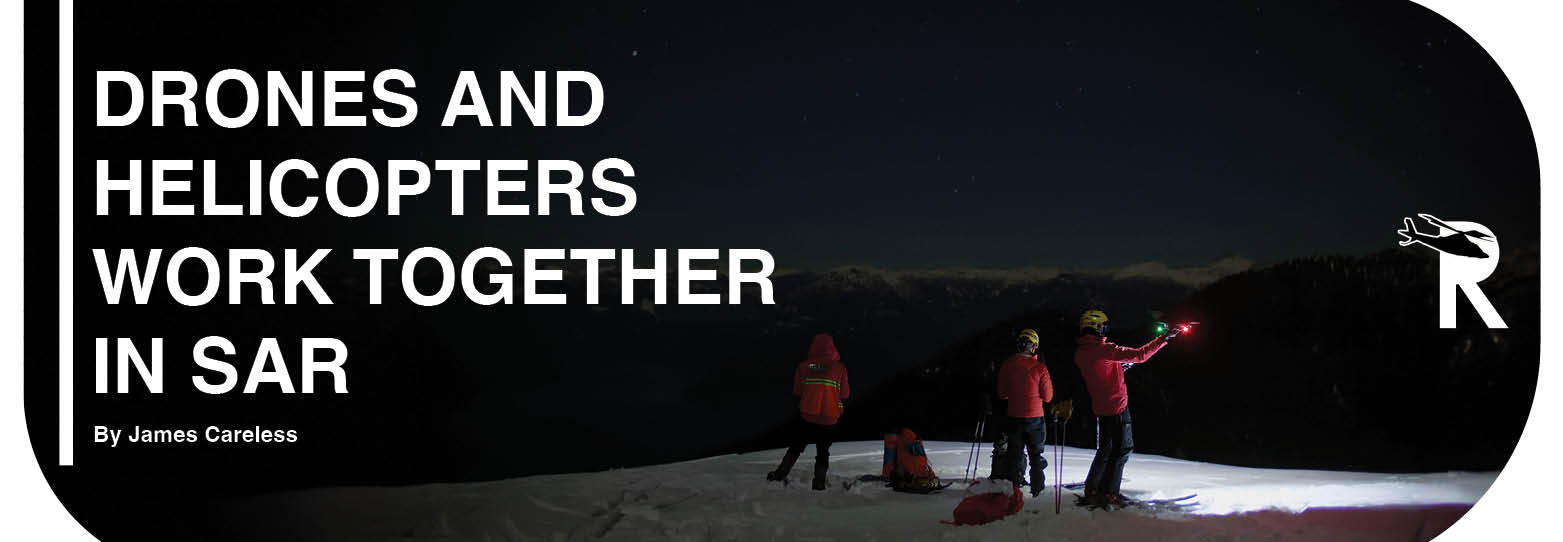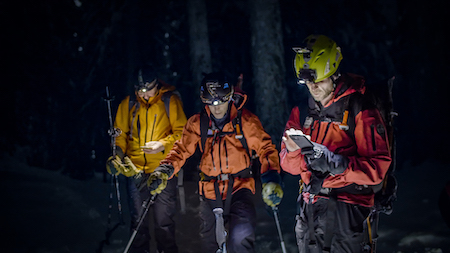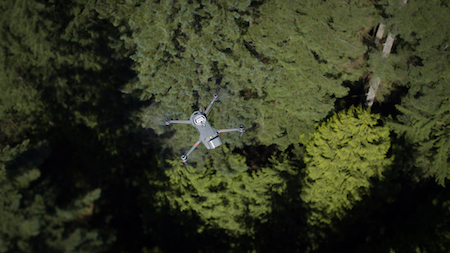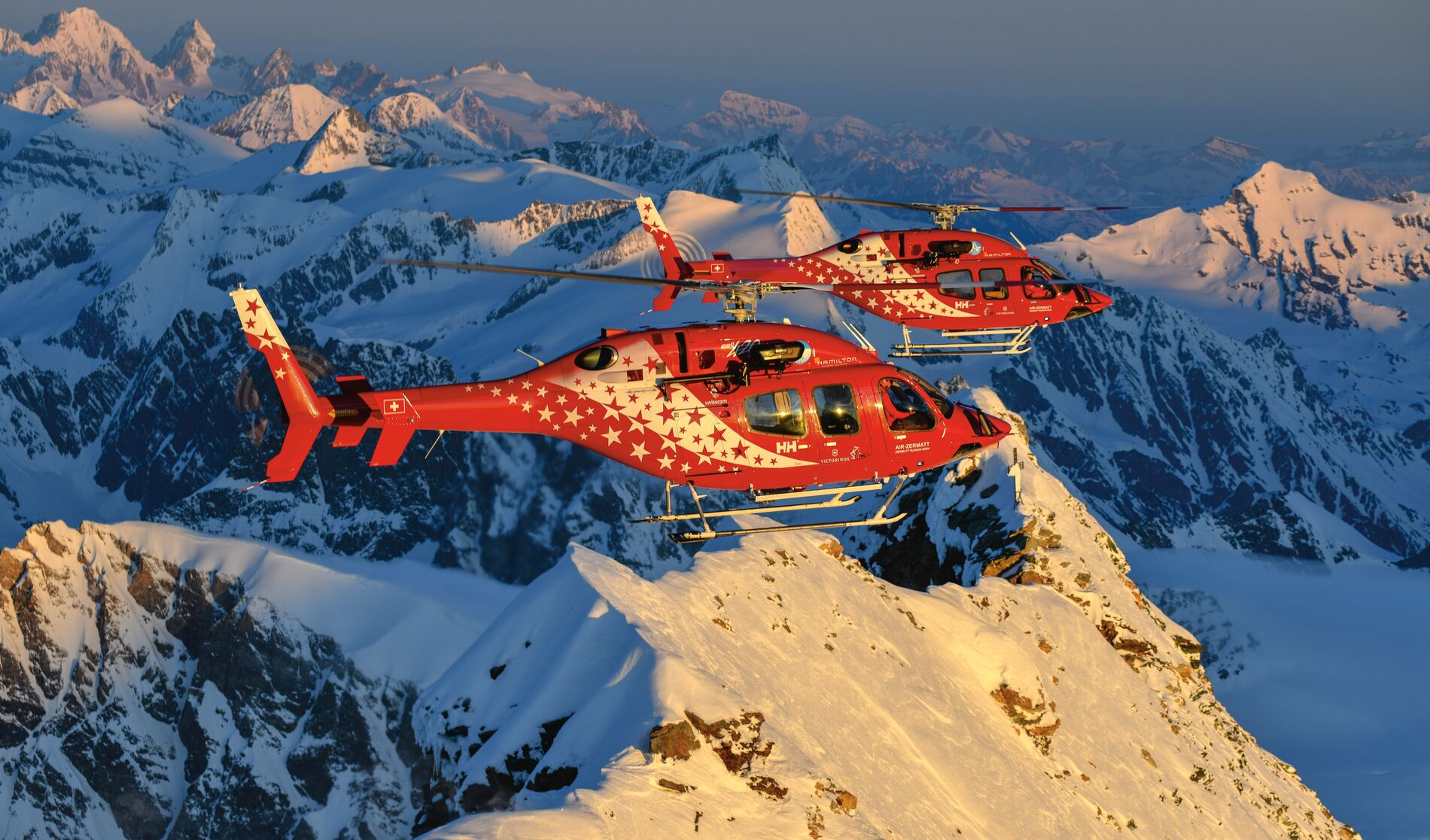|
Sep
30
2024
|
|
Posted 1 years 109 days ago ago by Admin
|
|

When it comes to search and rescue (SAR) operations, the teaming of drones (aka UAS) and helicopters go together like peas and carrots. “In today’s SAR missions, UAS can effectively complement helicopter operations performing the search task and also reduce the risks for the crewed helicopter that can be used only when strictly necessary, such as to perform rescue operations,” said Roberto Pretolani, Leonardo Helicopters division marketing manager for rotary uncrewed aerial systems. Leonardo produces both helicopters and fixed- and rotary-wing UAS.
Ground-controlled drones and piloted helicopters can also conduct searches together, to maximize the amount of territory covered. “When effectively coordinating, communicating and visually separating with each other, the teaming arrangements can provide enhanced aerial perspective,” said Terry Miyauchi, Bell’s Public Safety Segment manager and a former public safety operator. “In this regard, two sets of eyes in the sky can be more beneficial, but again, only if conducted safely with proper coordination, communications and separation.”
“Each can be used for searches and to also provide support for ground teams,” agreed Kyle Nordfors, UAS chairman with Mountain Rescue Association (MRA). The MRA SAR organization was founded in 1959 at Timberline Lodge at Mount Hood, Oregon.) “Coordinating airspace is easy to do as long as all are briefed and on the same page.”

Drone Advantages
There are very practical reasons to assign SAR search duties to drones. By their very nature, drones require less expertise to fly than helicopters, and can be dispatched from the ground within minutes of a search being launched. This being said, wider area searches do require more sophisticated drones with beyond-visual-line-of-sight (BVLOS) capabilities, range, and authorizations. In the main, drones can get to the search area quickly. Meanwhile, helicopter deployments may take time for crews to arrive at base and the aircraft to be prepared before an actual aerial search can be launched.
That’s not all. Drones that have been designed for long flight times can stay aloft much longer than crewed helicopters, and do so in extreme weather conditions that put human pilots at risk. This allows them to loiter overhead for hours at a time, or fly extended grid patterns that could exhaust a helicopter’s fuel supply.
In the case of Leonardo’s AWHero drone, “depending on the payload you can reach up to five hours of endurance,” said Pretolani. “In addition to that, the capability of this 200-kilogram class allows you to put a suite of sensors onboard, such as 8-inch EO/IR together with Leonardo’s Gabbiano TS20 Ultralight maritime radar for wide area all-weather coverage. Performance of this payload suite is comparable to what you would find on crewed helicopters.”
This being said, being able to fly in extreme weather doesn’t mean that drones are tougher than helicopters — they’re just more expendable. No one is at risk of injury/death when the drones crash, and they’re cheaper to replace than helicopters.
In some cases, the remote ruggedness of the territory to be searched necessitates the use of super-small drones that can be carried in by backpack. This is the approach used by North Shore Rescue (NSR), a volunteer-run SAR group based in Vancouver that responds to incidents in British Columbia and neighboring Washington state.
“We get a lot of hikers, skiers, and mountain bikers getting lost or injured, and that's the majority of the calls,” said Grant Baldwin, NSR’s drone operator. They use foldable, compact DJI Mavic 2 Enterprise drones for their search operations, which weigh less than two pounds yet fly for up to 30 minutes on a single battery charge and come with sophisticated cameras and sensors. “We decided to not go with the larger drones that are intended for search and rescue due to the mountainous terrain that we're dealing with. You have to be able to carry the drone on your back. We use the DJI Enterprise drone because it's portable, you can carry lots of batteries and it does have a decent thermal camera on it.”

Helicopters to the Rescue
Once someone has been spotted using a drone/drones in search mode, helicopters are usually called in to rescue them (unless some sort of drive-in rescue is possible and fast enough). This is because there is no substitute for the payload capacity of a helicopter for rescuing victims, nor for the hoisting and emergency medical expertise of the professionals on board. This is true even for North Shore Rescue. “We work with Vancouver’s Talon Helicopters; they have a fleet of Airbus helicopters,” Baldwin said. “When they come in to do the rescue, that’s where our job ends.”
The fact is that helicopters are as well suited to rescues as drones are to searches. This is why Bell’s Miyauchi isn’t concerned about drones displacing humans in aerial SAR. “Drones are having an incredibly positive impact on airborne public safety as a whole, to include SAR operations,” he said. “Whereas not long ago, drones were seen as a potential threat to manned public safety helicopter programs, they have proven to be anything but. As advantageous as the manned platform is, there are also several gaps in ability due to numerous constraints from geographic positioning to fleet bandwidth. Drones have done an incredible job of helping to close those gaps.”
Challenges to SAR Teaming
Today, drones and helicopters can complement each other nicely in SAR operations. However, there are a number of challenges that need to be overcome to realize their joint potential.
One of these challenges is interoperability. Drones and helicopters are separate aviation technologies that have grown up in isolation from each other. As a result, it can be difficult to share data wirelessly between the two platforms. “This is why the aviation community needs to establish some standards in terms of connectivity and protocols between crewed and uncrewed aircraft,” said Pretolani. “We need everyone to be able to talk to each other using the same standards. Leonardo has been and is involved in different projects—OCEAN2020 and MUSHER to mention the latest ones on the rotary UAS side—aimed at developing and demonstrating crewed-uncrewed teaming capabilities and interoperable architectures.”
Establishing common operations for sharing airspace is also vital, which comes down to “coordination, communication, and separation,” Miyauchi said. “Just as two manned helicopters jointly coordinate shared airspace with communications and visual separation, so is the case with unmanned and manned aircraft. Given the small size of drones and in some cases their lack of communication ability, this at times can be very challenging. When coordination, communication and separation is absent it can have a grossly negative impact on a SAR mission. When absent, the manned helicopter is forced to vacate the area in order to maintain safety.”
However, MRA’s Nordfors said, “The biggest obstacle that faces this joint operation is education of the individual. As I am a manned aircraft pilot and a remote unmanned pilot, it's fascinating to me how each branch of aviation knows so little of the other. Helicopter pilots need to learn what a drone can and what it can't do, and vice versa for the remote pilot. Having each pilot educated in the CONOPs of the other asset is super important to make this operation work. Manned aviation is largely ignorant of the drone industry, and it’s the same in the reverse order.”
He added that another big obstacle is sharing the same mental picture of the operation: “When a drone and a hellicopter are operating in the same airspace they both need to be in constant communication to avoid any potential incidents. It is also imperative that the remote pilot maintains visual contact with his/her drone and the helo at all times.”

Future Looks Exciting
Right now, drones and helicopters are generally staying in their respective search and rescue lanes during SAR operations. But they could end up working much more closely in the future, and likely will do so as AI-enabled flight control systems evolve.
“We see the future of search and rescue teaming as a subset of where the future is going for helicopters teaming with unmanned systems for all kinds of operations,” said a Sikorsky spokesperson in response to a Rotor Pro interview request for this article. “We see the helicopter controlling and coordinating the drones from the air, taking in and synthesizing the information they provide, and based on their size, even carrying and launching the drones. For example, the U.S. Army plans to have low-cost, lightweight launched effects (LE) drones fly in swarms and feed critical intelligence to joint forces. The Black Hawk helicopter could launch and control LE drones, offering (military) divisions more options and more flexibility for reconnaissance. The Army and Sikorsky have already experimented with equipping the Black Hawk with LE drones. This is another opportunity to leverage technology developed on the Future Attack Reconnaissance Aircraft (FARA) program to deliver advanced capabilities to the warfighter.”
What can be done for the warfighter can also be done for the rescuer, as the history of rotary-winged aircraft has proved time and again. A case in point: Leonardo’s Pretolani foresees a future where SAR drones can be controlled directly from SAR helicopters on the same mission, without a drone operator taking up space and payload capacity on that aircraft. To make this a reality, he said, “You need an increase in automation/autonomy on the drone, so as not to increase the workload of the crew”. This means that the helicopter crew should be able to assign the drone a high-level task as ‘search this specific area’, and then have the drone execute the search pattern autonomously, without human command and control.
This view is part of a larger integrated approach to SAR, where drones, helicopters, and assets on the ground work together as parts of an informational whole. “In particular, we see drones as part of a network that shares information among the different assets involved in the operation,” said Pretolani. “Sharing information among the different assets allows those in charge to have a full picture of what is happening and to make the right decisions at the right time.”
The bottom line: In the future, drones and helicopters will work closely together to make SAR operations faster, safer, and more effective for everyone involved. One day, the drone/search and helicopter/rescue silos that exist now will seem as quaint as rotary dial telephones, VCRs, and 56 kbps computer modems.
READ MORE ROTOR PRO: https://justhelicopters.com/Magazine
WATCH ROTOR PRO YOUTUBE CHANNEL: https://buff.ly/3Md0T3y
You can also find us on
Instagram - https://www.instagram.com/rotorpro1
Facebook - https://www.facebook.com/rotorpro1
Twitter - https://twitter.com/justhelicopters
LinkedIn - https://www.linkedin.com/company/rotorpro1